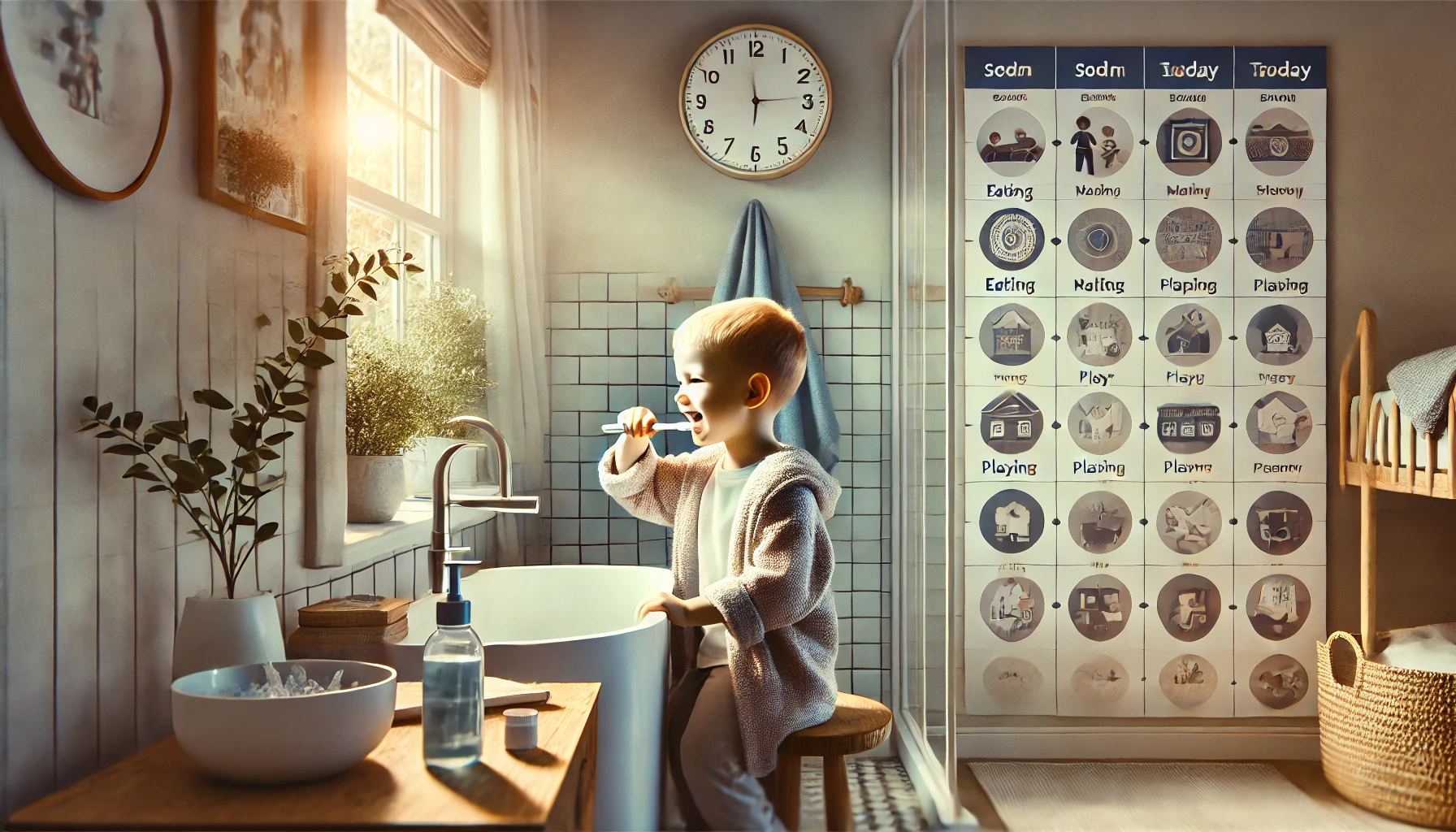Young children thrive on structure. Predictable daily routines not only help them feel safe and confident but also support healthy emotional, social, and cognitive development. When children know what to expect throughout the day, they can better manage transitions, emotions, and responsibilities — even in a home setting.
Whether your child is at home full-time or part-time, creating and sticking to routines can greatly improve their behavior, mood, and overall development.
Why Routines Are So Important for Young Children
Children between the ages of 2 and 6 are still developing their sense of time and understanding of cause and effect. Without structure, the world can feel unpredictable and overwhelming.
Here’s what consistent routines offer:
- Security: Routines make the day more predictable, which comforts children.
- Independence: When routines are repeated, children learn to do things on their own.
- Confidence: Accomplishing tasks, even small ones, boosts self-esteem.
- Better behavior: Knowing what comes next reduces tantrums and resistance.
- Healthier habits: Routines help establish good habits like brushing teeth and eating well.
- Improved sleep: A consistent bedtime routine helps children wind down and sleep better.
Key Moments to Build Daily Routines Around
Let’s explore the major parts of a child’s day and how to create beneficial routines around them.
1. Morning Routine
Mornings set the tone for the day. A calm, consistent morning routine can reduce stress and help children ease into the day’s activities.
Suggested routine:
- Wake up at the same time each day
- Wash face and hands
- Brush teeth
- Get dressed (with help or independently)
- Eat a healthy breakfast
- Help clean up their plate
- Review the day’s plan (if any)
Tip: Use picture cards to show each step for young children.
2. Meal and Snack Times
Eating at regular times provides stability and teaches children about nutrition and self-regulation. Make mealtimes screen-free and social whenever possible.
Routine ideas:
- Set a specific place for meals
- Have your child help with setting the table
- Offer water and healthy choices
- Teach them to wait until everyone is served
- Clean up together after eating
3. Learning or Quiet Activity Time
Designate a part of the day for focused activities — puzzles, drawing, learning games, or reading. This encourages concentration and independence.
How to structure:
- Start with 15–20 minutes for younger children
- Use a timer or calming music to mark the session
- Keep materials accessible and organized
- Rotate activities to maintain interest
4. Outdoor or Active Play
Children need physical activity for healthy growth and emotional regulation. Make time for running, jumping, climbing, or just free movement.
Ideas include:
- A backyard obstacle course
- Nature walks or scavenger hunts
- Dancing to music indoors
- Ball games or hopscotch
5. Rest or Nap Time
Naps are essential for children under 5. Even older kids benefit from quiet rest time.
Nap routine tips:
- Same time daily
- Dim lights and quiet environment
- Use a comfort item (like a blanket or stuffed animal)
- Read a short calming story before naptime
6. Afternoon Activities or Creative Time
After rest, children can explore creative projects such as:
- Arts and crafts
- Building with blocks
- Cooking or baking with supervision
- Pretend play
This is a great time for expression and skill-building.
7. Evening Routine
Winding down with a consistent bedtime routine improves sleep and reduces nighttime resistance.
Ideal evening routine:
- Clean up toys
- Bath or wash-up time
- Pajamas
- Brushing teeth
- Reading a bedtime story
- Lights out at a consistent time
How to Make Routines Work
Creating a routine is one thing — but maintaining it takes consistency and flexibility. Here are some tips:
- Use visual schedules: Especially helpful for non-readers
- Be consistent but flexible: Life happens — it’s okay to adapt
- Involve your child: Let them have some say in the routine
- Model the behavior: Children imitate what they see
- Celebrate progress: Small rewards or praise can reinforce good habits
Sample Daily Routine for a Preschool-Age Child (at Home)
| Time | Activity |
|---|---|
| 7:00 AM | Wake up, bathroom routine |
| 7:30 AM | Breakfast |
| 8:00 AM | Free play or outdoor time |
| 9:00 AM | Learning activity |
| 9:30 AM | Snack |
| 10:00 AM | Creative play (crafts, music) |
| 11:30 AM | Lunch |
| 12:00 PM | Nap or rest time |
| 2:00 PM | Snack and light play |
| 3:00 PM | Story time or educational game |
| 4:00 PM | Outdoor play |
| 5:30 PM | Dinner |
| 6:30 PM | Bath, pajamas |
| 7:00 PM | Story and bedtime |
Adjust this to fit your child’s age, needs, and personality.
Building Security Through Routine
In a world full of change, children find comfort in knowing what to expect. Establishing predictable routines doesn’t mean rigid schedules — it means providing rhythm and structure that help children feel confident, capable, and calm. With time, these routines become the building blocks for a secure and well-balanced childhood.
